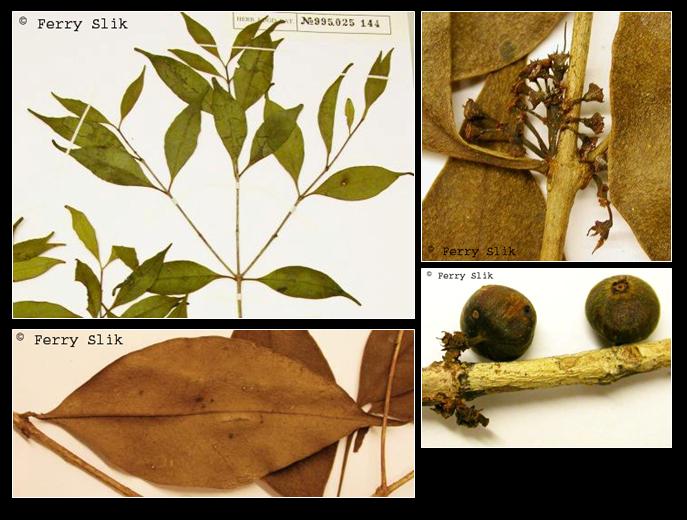Memecylon edule Roxb., Pl. Coromandel 1 (1798)
Latin for 'edible'.Synonyms
Memecylon edule var. typica C.B.Cl in Hook.f.
Description
Sub-canopy tree up to 23 m tall and 53 cm dbh. Stipules absent. Leaves
opposite, simple, penni-veined, tertiary venation faint, glabrous. Flowers ca. 2
mm diameter, bluish-purple, placed in axillary bundles. Fruits ca. 8 mm long,
blue-purple, berries.
Ecology
In relatively open undisturbed mixed dipterocarp, swamp, coastal, keranga
and sub-montane forests up to 1400 m altitude. Often on alluvial sites near
rivers and streams, but also common on hillsides and ridges, usually on sandy
soils. In secondary forests usually present as a pre-disturbance remnant tree.
Uses
The fruits are edible.
Distribution
India, Indo-China, Thailand, Peninsular Malaysia, Sumatra, Java, Borneo
(Sarawak, Brunei, Sabah, West- and East-Kalimantan), Philippines.
Local names
Borneo: Basing, Kayu besi, Kebesi, Nipis kulit, Obar, Telinga.
